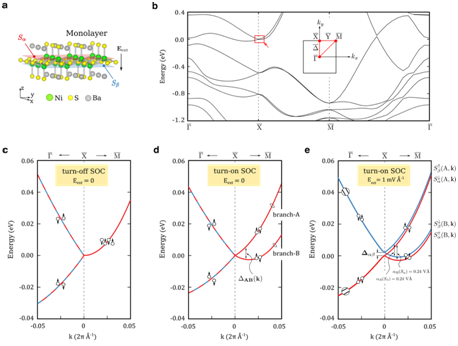Spin-orbit coupling (SOC) effect is at the central of many emergent physics in condensed matter physics: spin-transistor, spin qubits, Rashba effect, spin-orbit torque, cold atom system, topological material, majorana fermion etc. SOC induced spin splitting effect (Dresselhaus and Rashba effect) in solids has long been considered to exist only in inversion asymmetric systems, while our 2014 Nature Physics paper (https://www.nature.com/articles/nphys2933), entitled “Hidden spin polarization in centrosymmetric crystals”, revealed a similar but hidden effects (R-2 and D-2) could also presence locally in centrosymmetric crystals with addition site asymmetry constrain. For example, Si crystal is centrosymmetric with spin degenerate bands that originate from the two inequivalent Si sites, either site sees an inversion asymmetric Td symmetry and host a local spin polarization.
Since then, the idea of hidden spin polarization has been demonstrated by several independent experiments and has inspired the findings of many other hidden phenomena including: hidden orbit polarization, hidden circular polarization, superconductor in centrosymmetric crystals, hidden current induced spin polarization, spin orbit torque in antiferromagnetic etc. Thus, greatly extends the territory of interests to many exotic spin related physics. Very interestingly, a recent Science article, by LANZARA's group in national library of Laurence Berkeley, report a spin-ARPES experiment of cuprate, which indicates possible correlation between high-temperature superconductor and so-called hidden spin polarization.
In our recent work, entitled "Uncovering and tailoring hidden spin polarization in centrosymmetric crystals", we developed the theory of hidden spin polarization by clarifying the common local origin of both R-1 and R-2 and build a unified theory for both effects.
We realized a symmetry-assisted mechanism that establishes pure hidden spin polarization effects with two local sectors completely segregated in the sense of vanishing inter-sector interaction. This will close recent debates put forward by Professor APPELBAUM from University of Maryland argued that hidden spin polarization (R-2 and D-2) effect is either unavailable to detect or trivially two copy of conventional spin polarization effects (R-1 and D-1).
This work has been published online (DOI: 10.1038/s41467-019-08836-4) in Nature Communications in February 22. This is supported by National Natural Science Foundation (NSFC) under Grant No. 61888102 etc. Dr. YUAN Lin-Ding and LIU Qihang are the first author of this work and contributes equally. Prof. LUO Jun-Wei and Prof. ZUNGER Alex are the correspondence authors.

The crystal structure and energy bands of the monolayer BaNiS2. (Image by YUAN Lin-Ding)

